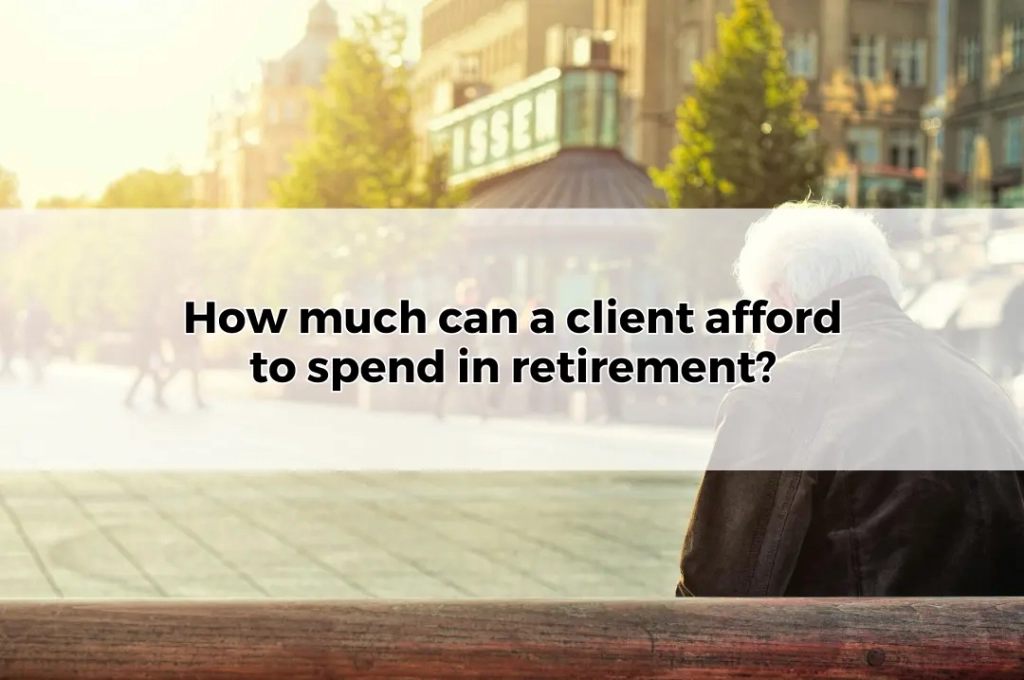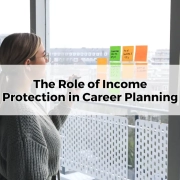How much can a client afford to spend in retirement?
Table of Contents
ToggleMany Australians approaching or already in retirement struggle with the question: “How much can I afford to spend?” Understanding the value of their retirement savings is one thing, but turning those savings into a steady income stream throughout retirement is another challenge. This includes factoring in other sources of income, like the Age Pension (if applicable). Getting this wrong can have significant consequences. Underspending or overspending can leave you with regrets and hinder your ability to enjoy your retirement years. This is why so many Australians seek professional financial advice to answer this crucial question.
Determining a comfortable and sustainable retirement spending plan for a client involves a variety of factors and some unknowns. Key questions include:
- What defines “safe” spending in a client’s specific situation?
- How long will they live?
- How will their spending habits change over time?
- Will they be eligible for government benefits?
- How will investment returns fluctuate throughout their retirement?
Unfortunately, there’s no single answer to the ideal retirement spending level. Perfect foresight into lifespan and market performance is impossible.
However, creating a projected spending estimate can be a valuable tool for clients to make informed decisions. In the following sections, we’ll explore a framework for calculating a “safe” retirement spending level for your individual needs.
Calculating a “safe” level of retirement spending
This analysis helps you understand a safe level of spending in retirement. It assumes a 67-year-old homeowner with all savings in superannuation and a moderate investment risk profile.
Here’s what to consider:
- Confidence in Spending: This analysis provides a “safe” level of spending with a 90% chance of lasting throughout your retirement. Clients with different circumstances may have a different risk tolerance. For example, someone with ongoing financial advice might choose a higher initial spending level with regular reviews.
- Sustainability Testing: We test the likelihood your spending will be sustainable throughout your life expectancy, and even beyond.
- Inflation and Income: We assume your spending will increase with inflation, and consider both your Age Pension and income from your superannuation account-based pension (ABP) to meet your needs.
- Market Simulation: We analyse thousands of scenarios to consider potential market returns and inflation.
- Tax Considerations: This analysis doesn’t account for taxes on income earned outside superannuation.
Note: This analysis uses Challenger’s Retirement Illustrator with specific assumptions. Refer to the tool’s guide for details and limitations. We can create additional scenarios specific to your situation using the Retirement Illustrator.
This information should be used as a guide. We recommend speaking with a financial advisor to determine the best approach for your individual circumstances.
Couple, male and female, aged 67, homeowners
This table illustrates safe spending levels for a retired homeowner couple, both aged 67, with retirement savings entirely in ABPs. The range for savings is $200,000 to $3,800,000, assuming an even split between the couple.
| Amount of retirement savings (couple, M/F, age 67) | 90% confidence spend (1 in 10 chance run out by life expectancy) | Confidence can afford spend 3 years longer than life expectancy (LE+3) | Confidence can afford spend 6 years longer than life expectancy (LE+6) |
|---|---|---|---|
| $200,000 | $51,100 | 84% | 78% |
| $400,000 | $58,700 | 85% | 78% |
| $600,000 | $64,700 | 84% | 76% |
| $800,000 | $69,300 | 83% | 73% |
| $1,000,000 | $73,200 | 82% | 71% |
| $1,200,000 | $77,700 | 82% | 72% |
| $1,400,000 | $82,700 | 82% | 72% |
| $1,600,000 | $87,800 | 83% | 73% |
| $1,800,000 | $93,600 | 83% | 74% |
| $2,000,000 | $99,700 | 83% | 75% |
| $2,200,000 | $106,400 | 83% | 75% |
| $2,400,000 | $113,000 | 83% | 75% |
| $2,600,000 | $119,700 | 84% | 76% |
| $2,800,000 | $126,600 | 84% | 77% |
| $3,000,000 | $133,800 | 84% | 77% |
| $3,200,000 | $141,100 | 84% | 78% |
| $3,400,000 | $148,600 | 84% | 78% |
| $3,600,000 | $156,400 | 84% | 78% |
| $3,800,000 | $164,000 | 84% | 78% |
Analysis completed using Challenger Retirement Illustrator at 19 March 2024.
Imagine a retired couple with $1 million saved up. By carefully managing their spending at $73,200 per year (adjusted for inflation), they can be 90% confident their nest egg will last throughout their lifetimes. Doubling their savings to $2 million allows them to increase their annual spending to $99,700 with the same level of confidence. However, extending their desired retirement timeline beyond life expectancy significantly reduces that confidence. For the couple with $1 million, spending $73,200 a year and living six years past their projected life expectancy lowers their confidence level to 71%. That means roughly 3 out of 10 couples in this scenario might not be able to maintain their desired lifestyle for the entire extended period.
Single, female, aged 67, homeowner
This table illustrates safe spending strategies for a retired single homeowner. It considers factors such as retirement savings and may be relevant for individuals with similar circumstances.
| Amount of retirement savings (single female, age 67) | 90% confidence spend (1 in 10 chance run out by life expectancy) | Confidence can afford spend 3 years longer than life expectancy (LE+3) | Confidence can afford spend 6 years longer than life expectancy (LE+6) |
|---|---|---|---|
| $100,000 | $33,100 | 83% | 76% |
| $200,000 | $37,700 | 82% | 73% |
| $300,000 | $42,000 | 82% | 72% |
| $400,000 | $45,200 | 82% | 71% |
| $500,000 | $48,100 | 82% | 68% |
| $600,000 | $51,000 | 78% | 64% |
| $700,000 | $53,200 | 80% | 65% |
| $800,000 | $55,900 | 80% | 66% |
| $900,000 | $58,800 | 81% | 67% |
| $1,000,000 | $62,200 | 80% | 67% |
| $1,100,000 | $65,500 | 81% | 68% |
| $1,200,000 | $69,000 | 81% | 68% |
| $1,300,000 | $73,000 | 81% | 69% |
| $1,400,000 | $76,800 | 81% | 69% |
| $1,500,000 | $80,600 | 82% | 70% |
| $1,600,000 | $84,400 | 82% | 71% |
| $1,700,000 | $88,400 | 82% | 72% |
| $1,800,000 | $92,300 | 82% | 72% |
| $1,900,000 | $96,400 | 83% | 73% |
But not all clients are aged 67
We discussed how “safe” spending amounts can vary depending on a client’s unique situation. The table below highlights this variability. It shows how the same $1,000,000 retirement savings can translate into different “safe” spending levels for clients with varying ages, genders, and relationship statuses. Remember, this table is for illustrative purposes only, and doesn’t capture every possible scenario.
| Client type | 90% confidence spend (p.a.) |
|---|---|
| 62F | $55,300 |
| 67F | $62,200 |
| 72F | $70,200 |
| 77F | $87,100 |
| 62M | $57,700 |
| 67M | $63,900 |
| 72M | $75,800 |
| 77M | $92,000 |
| 62M/F | $67,000 |
| 67M/F | $73,200 |
| 72M/F | $80,600 |
| 77M/F | $92,500 |
“Safe” spending in practice
Serena is a 67-year-old single homeowner looking to explore her retirement spending options. She has accumulated a total of $780,000 ($700,000 in super, $50,000 in cash/term deposits, and $30,000 in non-financial assets). While the ASFA Modest Retirement Standard suggests an income of $32,417 per year (September 2023) might be sufficient, Serena aspires for a more comfortable retirement lifestyle. To assist Serena, her financial advisor Sarah will be using the Challenger Retirement Illustrator to analyze the sustainability of various spending levels throughout her retirement. This will help Serena make informed decisions about her retirement income.









